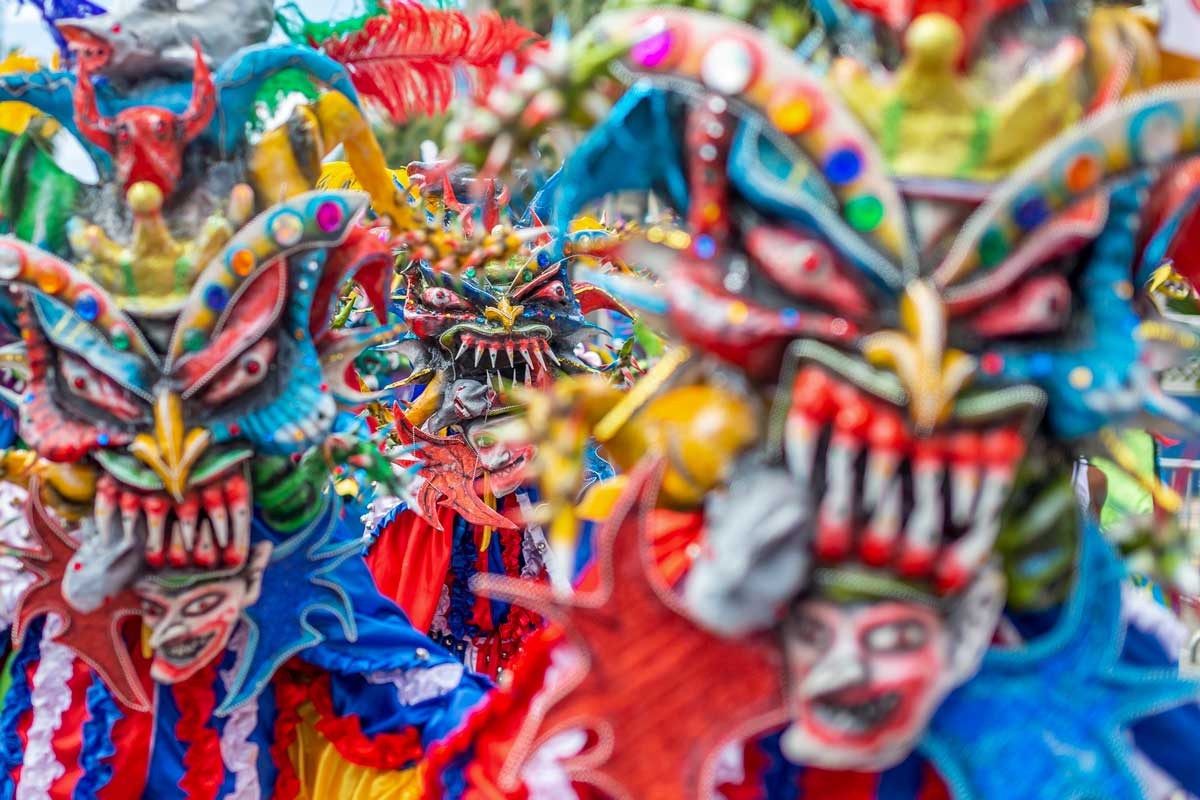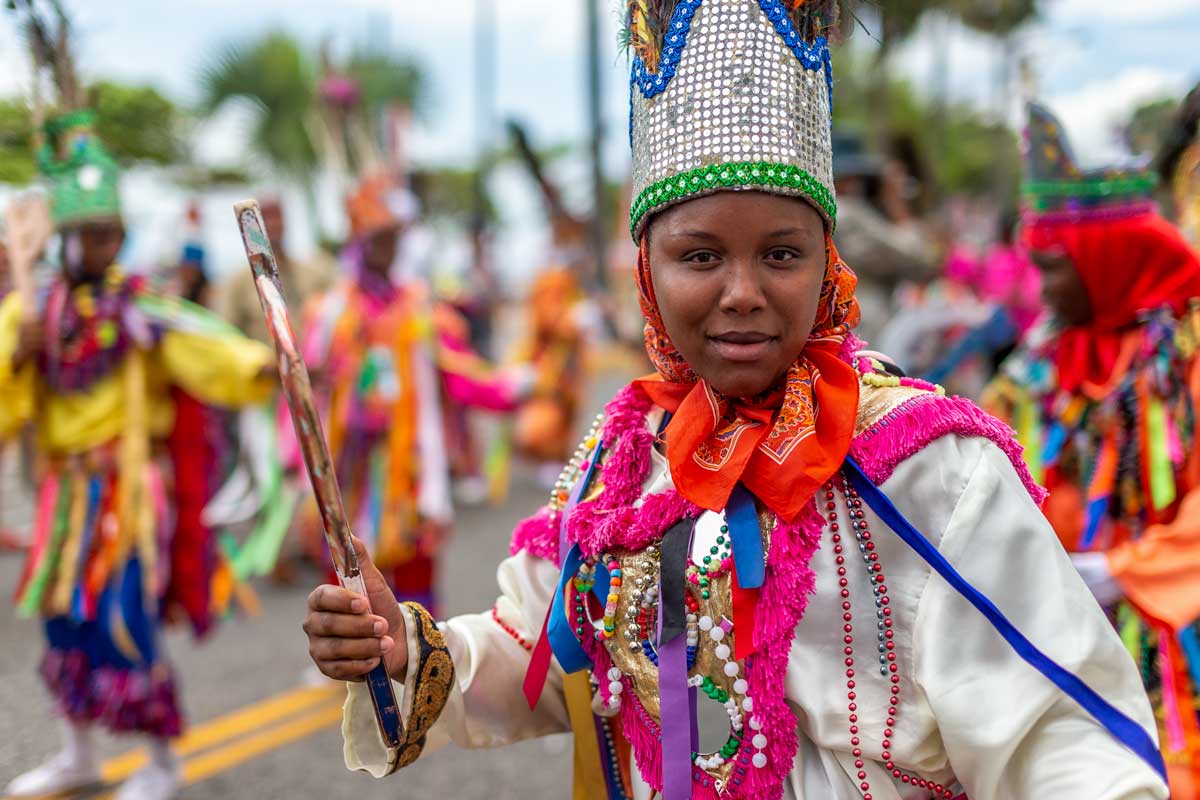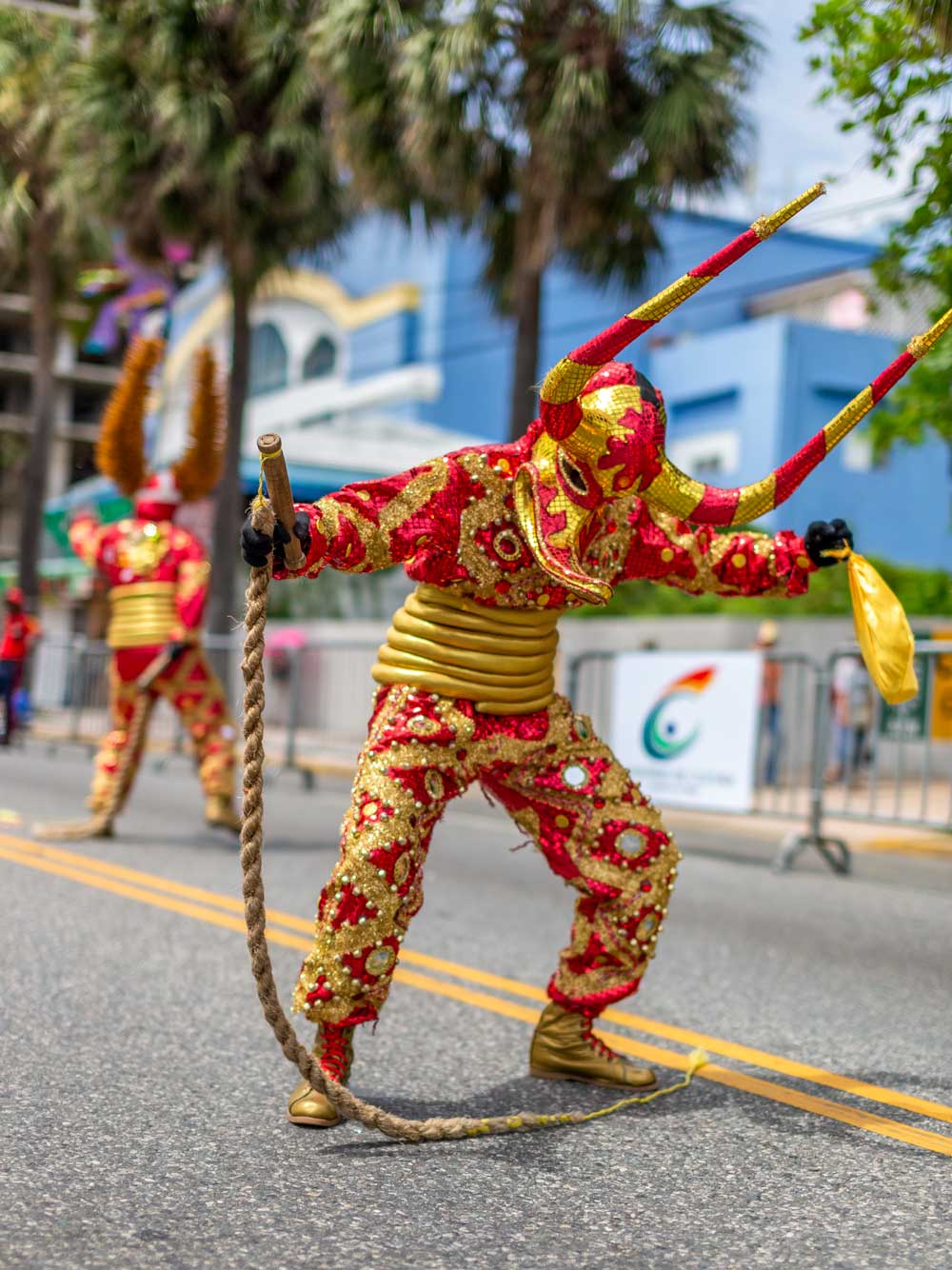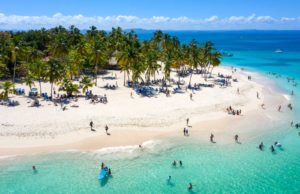Festivals & Events
Party like a Dominican at Santo Domingo Carnival
National Carnival at Avenue Malecón, Santo Domingo
Photo: Mario De Moya F / Shutterstock.com
The Carnival in Santo Domingo, also known as Carnaval Dominicano, offers travelers a chance to see what makes Dominican culture great - and have a whirlwind of fun while you’re at it.
Share
Each February, this fantastic celebration of Dominican culture comes to the capital of Santo Domingo. It’s a chance to experience the best of Dominican music, dance, art, and street food, and to see Dominicans of all ages and backgrounds come together in one spectacular event.
Carnival doesn’t happen only in the capital. Throughout the month, there are celebrations and parades in every corner of the DR, and each region does Carnival slightly differently, with their own unique twist on costumes and music.
So why see Carnival in the capital? The Santo Domingo Carnival is easily the biggest in the country, and the most accessible for tourists. The official event is called the National Carnival Parade and usually happens on the first Sunday of March.

National Carnival Parade at Avenue Malecón, Santo Domingo
Photo: Mario De Moya F / Shutterstock.com
History of the Dominican Republic Carnival
Did you know that the Dominican Republic is believed to be the first place in the whole of the Americas to hold Carnival celebrations?
The Dominican Republic Carnival, or Carnaval Dominicano, dates all the way back to 1520 during Spanish colonial times. It’s rumored that the original Carnival was to celebrate the arrival of a famous Dominican friar and people would dress up as Moors and Christians. Its believed Dominicans created Carnival as an annual tradition to provide a welcome relief to the harsh realities of sixteenth century Dominican life, marked by hard work and strict religious expectations on behaviour. Carnival allowed people to let go of decorum and let their hair down.
Fast forward to the 1790s - governance of the Dominican Republic changes dramatically during a period of time called either the Unification of Hispaniola or the Haitian Occupation - depending on who you ask. During these decades, Dominicans stopped wearing costumes during religious celebrations. After centuries of Spanish, French and finally Haitian rule, the Dominican Republic won its independence in 1844, and extravagant costumes returned to Carnival, more important than ever in celebrating Dominican identities and place-making. Since then, the Dominican Republic Carnival has been a vibrant celebration of the country’s independence.
Today, Carnival has spread throughout the Caribbean and the United States, and it’s still all about dressing up and cutting loose. You’ve heard of the New Orleans Mardi Gras, but Santo Domingo is where it all started, and there’s nothing like experiencing Carnival in the place where it was born.

National Carnival at Avenue Malecón, Santo Domingo
Photo: Mario De Moya F / Shutterstock.com
Carnival in Santo Domingo
Carnival is actually celebrated throughout the entire month of February, with festivities coming to a climax around Independence Day on February 27th. In Santo Domingo especially, Carnival is concentrated around Independence Day.
The night before Carnival in Santo Domingo officially starts, homeowners light up their houses and balconies in preparation, illuminating the entire town.
The next day, the National Carnival Parade brings thousands of Dominicans and tourists to the beautiful Avenue Malecón, a stone esplanade that follows the Rio Ozama river as it winds through the center of Santo Domingo.
The parade features competitions between the country’s best costume and dancing troops. On the river, look out for boats decorated with oranges and eggs, both filled with scented water.
Get lost in the madness of the event, watch eggs being thrown, whips being cracked, confetti clouding the sky and good vibes filling every street in the capital. Children run wild with painted faces while their parents drink and dance.
Watch out for the ‘limping devil’ - you might see a couple of parade participants dressed as him during the event. The ‘limping devil’, or diablo cojuelo, is a big part of carnival culture in the DR, with each city and province showing off their own version of him at the parade. Legend has it that this naughty character was so bad that he was pushed down to earth and hurt his leg on the way.
If you’re in Santo Domingo in late February, you’ll find yourself completely immersed in Carnival, with thousands of people from all over the world coming together in a feast of color, music and movement.

National Carnival at Avenue Malecón, Santo Domingo
Photo: Mario De Moya F / Shutterstock.com
Written by Andrew Miles.
Published November 2020
Explore Dominican Art & Culture
Centro León Museum and Cultural Centre
Get out to Santiago De Los Caballeros to experience Centro
Hear the Echoes of Time at Museo de las Casas Reales
Explore treasure, maps, weapons and other artefacts from the Spanish
Electric Paradise 2019
Every year in December, the Electric Paradise festival transforms Punta
8 Instagram Accounts that Will Make You Want to Visit the DR
Natural wonders, eco adventures and intimate personal diaries of daily
Mamey Librería Book Cafe in Santo Domingo
The gorgeous Mamey Librería book cafe has everything we’ve ever
Everything You Need to Know About Dominican City Park Culture
One of the best places to experience Dominican culture is
Dominican LGBTQ+ Nightlife: The Best Gay Bars and Clubs in the Dominican Republic
After a day spent swimming, sunbathing and sipping pina coladas
Categories
Tags
Share
Subscribe to our newsletter
Get more travel inspiration, tips and exclusive offers sent straight to your inbox

